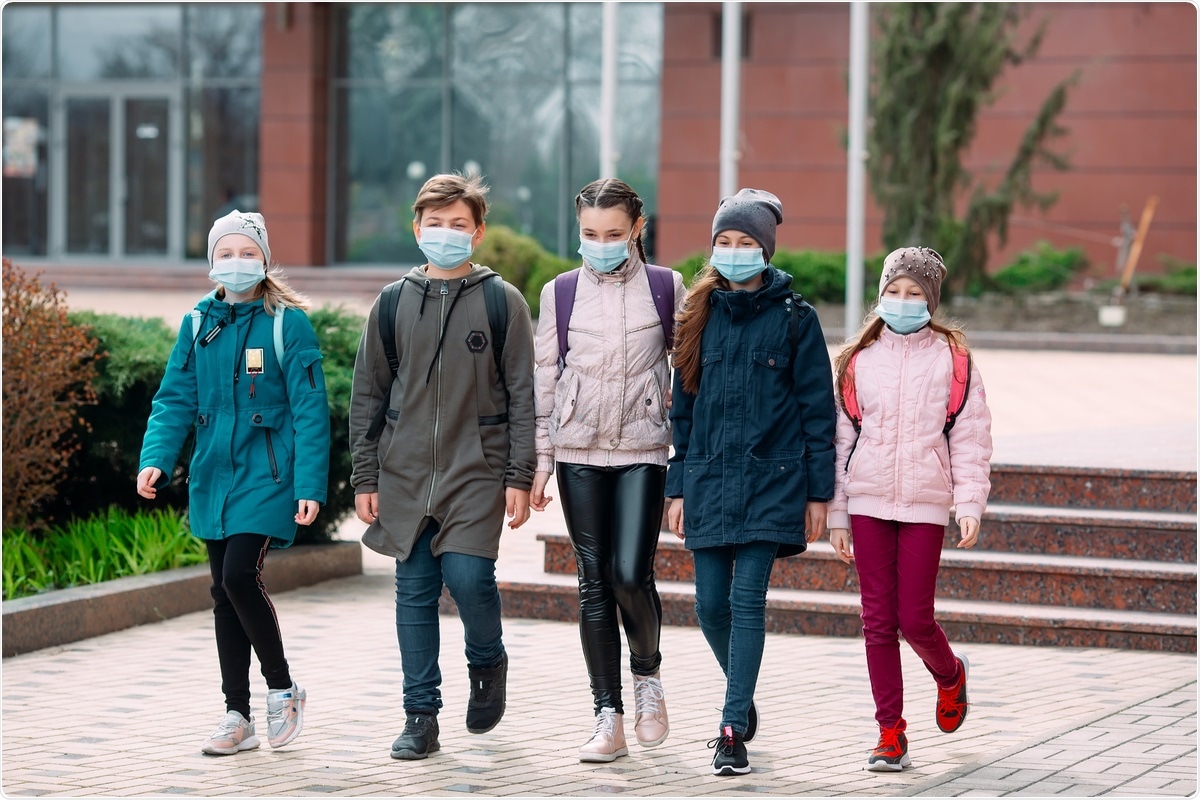Severe acute respiratory syndrome coronavirus-2 (SARS-CoV-2) has caused the ongoing coronavirus disease 2019 (COVID-19) pandemic. This virus is extremely virulent with high transmissibility. To date, it has claimed more than 4.9 million lives worldwide. Several therapeutic and non-therapeutic measures have been implemented throughout the world to reduce the mortality rate.
 Study: The impact of school opening model on SARS-CoV-2 community incidence and mortality. Image Credit: David Tadevosian/ Shutterstock
Study: The impact of school opening model on SARS-CoV-2 community incidence and mortality. Image Credit: David Tadevosian/ Shutterstock
Infection transmission and policymaking
To control the spread of SARS-CoV-2 infection, primary and secondary schools in the United States remained closed to in-person education. This strategy was guided by data obtained from influenza transmission models. These models showed that school closures could be an effective measure for reducing the basic reproductive number of respiratory viral infections. Previous studies showed that this strategy had positively controlled SARS-CoV-2 transmission.
The global modeling studies and time-series analyses reported differential assessment of the impact of reopening schools on the transmission of SARS-CoV-2 in a community. Although elementary school children are at low risk of severe COVID-19 infection, their role in disease transmission is still controversial. If staff or children contract COVID-19 infection in school, they can easily transmit the infection to other family members and, therefore, school settings enhance the risk of community transmission.
Several conflicting findings have been observed in recently published studies from Indiana, Texas, and other states, based on the role of schools in community transmission. Some analyses indicated significant increases in COVID-19 cases associated with school openings, while others contradicted this result. The latter studies reported reopening of schools for in-person classes has no impact on a community with minimal hospitalization rates.
Therefore, the association between type of school reopening mode, i.e., virtual, hybrid, or in-person, and its impact on a community transmission continues to be a critical policy question. A new national, retrospective cohort study has been published in Nature Medicine that focuses on determining the impact of school reopening mode on subsequent changes in the rates of COVID-19 infection in a community.
A new study
The current national cohort study, published in Nature Medicine, comprised almost half of all public school student enrollments across the United States. Researchers reported regional variations on the impact of school reopening policy on the community rate of SARS-CoV-2 infection.
In the southern USA, limited community-level mitigation measures were implemented, and schools were reopened when the prevalence of SARS-CoV-2 infection was high. In these regions, reopening schools for in-person learning played a significant role in community transmission. The western states followed a hybrid school mode method and experienced a sustained increase in community case rates. Regions that followed strict community public health measures and reopened schools when the COVID-19 cases were relatively low showed school reopening had minimal impact on the community.
The finding of this study is in line with previous studies that reported in-person learning had a significant effect on SARS-CoV-2 transmission in the community. The current study also indicated that although transmission rates of COVID-19 infection were correlated with the reopening of schools during the period when the number of cases was on the rise, this increase may not be lead to elevated mortality.
The present observational study failed to explain the exact reason behind the differential impacts of schooling mode and community transmission. However, scientists assumed the enhancement in the COVID-19 transmission rate in the South was due to limited infection control measures both inside and outside of school. In contrast, there was no increase in the incidence of COVID-19 cases in the Northeastern community. Interestingly, a decline in cases among children was reported after schools opened for in-person instruction.
Scientists have also indicated the possibility of the significant influence of different climatic conditions on the incidence of cases, i.e., independent of school mode policy. Therefore, several factors, such as different mitigation strategies in schools, varied weather conditions, and surrounding communities, may contribute to the differential effect of in-person schooling on community transmission. Further studies are required to uncover the impacts of these factors on COVID-19 incidence.
Conclusion
This study has several limitations. For instance, owing to its observational nature, it could not determine causality, only association. This study included data for the period between the 2020–2021 school year. Hence, two major factors were excluded, i.e., the emergence of more transmissible SARS-CoV-2 Delta variant and vaccination program for adults or adolescents. Therefore, it is not clear how the results of this study could be applied to the current situation.
The current study showed that the association between school opening mode and SARS-CoV-2 cases varied by region. The COVID-19 infection rate could also be correlated with preventive measures followed by the community and the time of school opening. Also, the introduction of in-school mitigation and community mitigation measures played a significant role in determining the rate of SARS-CoV-2 incidence.